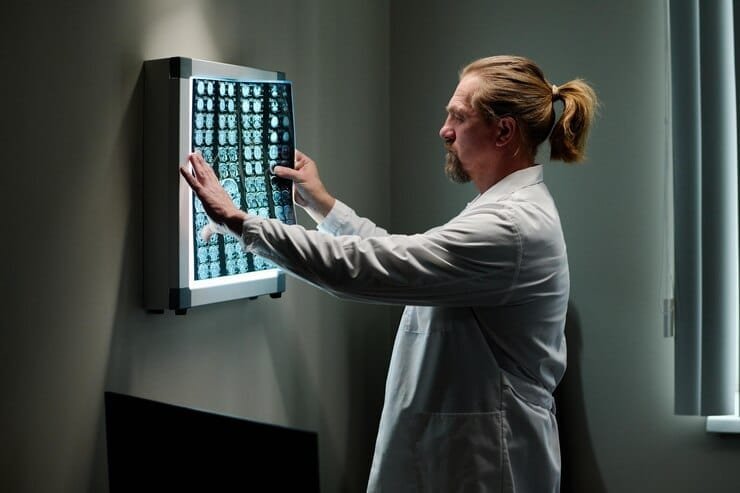Overview
Imagine the sterile hum of a hospital corridor, the soft glow emanating from a darkened imaging room. For years, we’ve stood in awe of the medical marvels born within these spaces—MRI machines capturing the intricate whispers of our inner selves, ultrasound wands painting vivid pictures of life unseen, CT scanners offering slices of reality with breathtaking clarity. These devices, giants of diagnostic power, have been the silent storytellers of our health journeys. But what if I told you that the very core of these incredible tools, the electronics pulsing beneath their polished surfaces, are poised for a radical transformation? It’s not just a software update or a new sensor, this shift is akin to a geological tremor reshaping the landscape we know.
The familiar world of medical imaging electronics, built upon established pathways, is now feeling the shockwaves of innovation. Think of it – the tiny microprocessors, the delicate wiring, the intricate circuits – they are the unsung heroes, the lifeblood of these machines. And they’re about to undergo a metamorphosis, driven by cutting-edge materials science and an insatiable desire for sharper images, faster scans, and greater portability. It’s a tale not just of technological advancement, but a story of how the most intimate aspects of our healthcare are being rewritten, one electron at a time. This isn’t just a tweak; it’s a fundamental reimagining. This blog will delve into the heart of this revolution, revealing the forces at play and exploring what these changes mean for the future of medical electronics—and the patients they serve. Get ready to witness the silent giants of medical imaging roar into a new age.
The Overture: A Landscape in Motion
The medical imaging market, once a quiet realm of x-rays and bulky scanners, has transformed into a bustling marketplace driven by relentless technological innovation and an ever-increasing demand for precise diagnostics. But the currents of change are complex, not always flowing in a single, predictable direction.

Positive Trends: Riding the Wave of Innovation
- The Rise of AI-Powered Imaging: Imagine a radiologist, not just seeing an anomaly but having an AI co-pilot highlighting subtle patterns, predicting potential outcomes with astonishing accuracy. That’s the reality of AI integration. This isn’t just about speed; it’s about reducing human error, improving diagnostic certainty, and offering personalized treatment plans. Companies like Butterfly Network, with its handheld ultrasound powered by AI, are democratizing access to diagnostic imaging. Impact: Increased efficiency, more accurate diagnoses, greater access to healthcare.
Analyst Recommendation: Embrace AI wholeheartedly. Develop algorithms, partner with AI developers, and train staff to leverage these tools effectively.
- Tele-Imaging & Remote Diagnostics: Picture a patient in a remote village, receiving an expert diagnosis from a specialist hundreds of miles away. Tele-imaging is breaking down geographical barriers, making sophisticated medical expertise available to underserved populations. This isn’t just a niche application; it’s a fundamental shift in how healthcare is delivered. Impact: Greater healthcare equity, faster diagnosis, cost-effective service delivery.
Analyst Recommendation: Invest in robust tele-imaging platforms, expand your network to reach remote areas, and build strategic partnerships with rural healthcare providers.
- The Push for Minimally Invasive Procedures: The days of bulky, invasive scanners are fading. The future belongs to devices that are smaller, faster, and less intrusive. Think of micro-endoscopes delivering real-time, high-resolution images or wearables that capture continuous physiological data. Impact: Enhanced patient comfort, faster recovery times, reduced healthcare costs.
Analyst Recommendation: Prioritize R&D towards smaller, more portable imaging solutions. Emphasize patient comfort and ease of use in your product design.
Adverse Trends: Navigating the Rapids
- Mounting Regulatory Hurdles: The stricter regulations and lengthy approval processes, while crucial for patient safety, can feel like navigating a bureaucratic labyrinth, slowing down innovation and increasing costs. Impact: Delayed product launches, higher development costs, potential market entry barriers.
Analyst Recommendation: Build a strong regulatory affairs team, start engaging with authorities early in the development process, and focus on compliance from the get-go.
- Intensifying Competitive Landscape: The medical imaging market is no longer the playground of a few giants. New players, often with disruptive technologies, are emerging, creating fierce competition. Impact: Pricing pressure, reduced market share, need for constant innovation.
Analyst Recommendation: Differentiate your offerings through specialization, focus on niche markets, and relentlessly pursue innovation to maintain your competitive edge.
- Data Privacy Concerns: The sheer amount of sensitive patient data generated by imaging devices raises serious ethical and security concerns. Data breaches could erode patient trust and result in heavy penalties. Impact: Increased liability, reputational damage, potential legal action.
Analyst Recommendation: Implement robust data security protocols, prioritize patient privacy, and invest in cybersecurity infrastructure. Make data privacy a cornerstone of your business culture.
The Closing Scene: A Story of Adaptation and Progress
The medical imaging market is a narrative of relentless change. Those who embrace the possibilities while diligently mitigating the challenges will find themselves not just surviving but thriving. Companies that become pioneers in AI, build robust tele-imaging networks, and prioritize patient comfort will shape the future of this vital field. It’s a journey of constant adaptation, a compelling story of innovation, and ultimately, one of profound impact on human health.
Healthcare:
Dr. Anya Sharma, a radiologist at a bustling city hospital, leaned closer to the monitor. The swirling grayscale images of a patient’s lung, captured by a state-of-the-art MRI machine, told a story no ordinary x-ray could narrate. Tiny, insidious nodules, mere whispers on the screen, revealed the early stages of lung cancer. This precise and detailed visualization, a leap from traditional methods, allowed Dr. Sharma to formulate an individualized treatment plan, significantly enhancing the patient’s chances of survival. The high resolution and speed of these imaging devices transformed diagnosis from a guessing game into a precise science. Gone are the days of blurry images; the clarity now allows for early detection and less invasive procedures.
Technology:
In the gleaming labs of a silicon valley tech company, engineers weren’t examining human bodies; they were scrutinizing circuit boards. A custom-built micro-CT scanner, usually used for bone density assessments, now revealed hidden cracks and imperfections in the intricate layers of microchips. These microscopic details, invisible to the naked eye, were crucial for ensuring the reliability of their newest processor. “It’s like seeing the invisible architecture of our own creations,” quipped lead engineer, Kenji Ito, as he pointed out a hairline fracture in the sample. The application of medical imaging’s precision, outside its traditional realm, offered unparalleled quality control.
Automotive:
At a sleek automotive factory in Germany, the air hummed with the sound of robots. Here, an adapted industrial CT scanner, similar to the ones used for diagnosing patients, was busy examining engine components. A newly cast cylinder block, still warm from the forge, was rotated and scanned. The digital image, displayed on a large screen, exposed tiny air pockets hidden deep within the metal. “These voids,” declared production manager, Klaus Weber, “would weaken the engine.” This immediate feedback loop, previously unattainable, allowed the factory to adjust the manufacturing process on the fly, preventing defects and producing higher-quality engines. This is no longer just about looking inside bodies but rather looking inside anything from the mundane to the high-tech. The precision offered by the medical imaging techniques has transformed manufacturing quality control processes.
Organic Strategies: Focusing Inward
Imagine Sarah, a product manager at a leading medical imaging firm, in a meeting early 2023. She recalls the CEO saying, “We need to sweat our assets, team. Let’s enhance what we have.” This sparked a push for product enhancements. They weren’t developing entirely new machines but were adding AI-powered image processing to existing MRI and CT scanners, improving image clarity and speeding up scan times. Clinicians were now reporting better diagnostic accuracy, a clear win. Simultaneously, the sales team, led by Ben, doubled down on customer relationship management. “Our existing users are our biggest advocates,” Ben would say. They started offering more comprehensive training programs, and user-friendly software updates, boosting customer loyalty and repeat business, proving that a satisfied client can be the best marketing tool. Finally, Sarah’s tech team pioneered modularity in design, allowing hospitals to easily upgrade components rather than replacing entire systems.
Inorganic Strategies: Expanding the Reach
Later in the year, during a strategy review session, the conversation shifted towards growth. “Organic growth is great, but we need to expand our footprint,” said the CFO. This led to the exploration of strategic acquisitions. A smaller, innovative firm specializing in ultrasound technology was acquired, giving their portfolio a significant boost in a growing segment of the market. This also brought in new talent and intellectual property. Simultaneously, they entered into a distribution partnership with a firm that had a strong network of hospitals in Southeast Asia, a region previously difficult to penetrate. “This way, we’re tapping into existing channels,” Ben exclaimed, “it’s faster and efficient.” The firm also started investing in collaborative research with universities, exploring cutting-edge technologies like photon-counting CT. This move was aimed at securing a future leadership position by gaining access to early research and innovations that they could incorporate into their future offerings. This proactive step ensured that the company was not just a player but also a shaper of the future of medical imaging.

Alright, let’s peer into the future, shall we? Imagine, for a moment, stepping into a world where medical imaging isn’t just a diagnostic tool, but a sculptor of health itself. The next 5 to 10 years aren’t just about incremental upgrades; we’re talking about a seismic shift in how we interact with our bodies’ internal landscapes. Think of ultrasound probes, once clumsy and cumbersome, now sleek, intuitive extensions of the physician’s hand, providing real-time, breathtakingly clear 3D views. Consider MRI machines, no longer claustrophobic behemoths, but elegant, patient-centered experiences that whisper secrets of cellular activity. This is where medical imaging, the rockstar of medical electronics, is hurtling towards – a convergence of AI-driven analysis, nanoscopic precision, and personalized therapies.
This isn’t just about prettier pictures, folks. It’s about transforming patient care, dramatically reducing invasive procedures, and accelerating the pace of scientific discovery. The ripple effect throughout the broader medical electronics sector is undeniable; new materials, energy-efficient designs, and user-centric interfaces are all converging, fueled by the advancements in imaging. We’re moving from diagnosis to proactive intervention, from reactive medicine to precision health – and it’s all being propelled by the shockwaves emanating from this corner of our industry. So, as you navigate the ever-changing terrain of medical electronics, are you ready to harness the transformative power of imaging and redefine the future of patient care?


